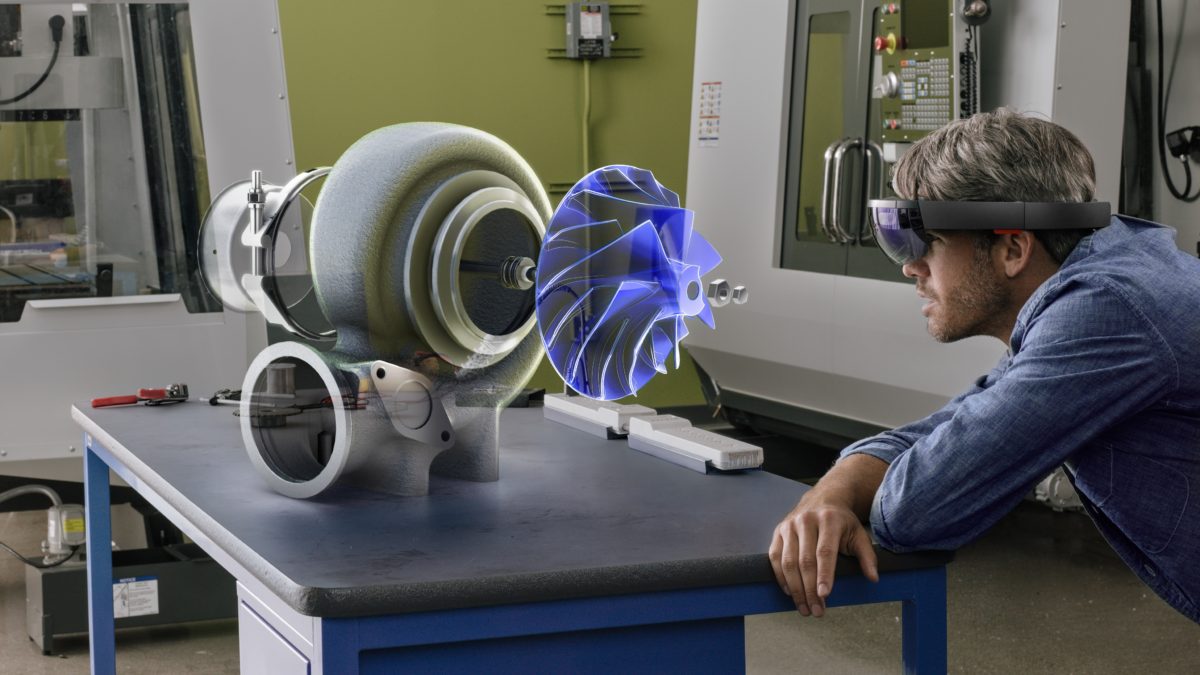Augmented Reality
Augmented reality (AR) is the integration of digital content into the physical environment (This differs from Virtual Reality which only displays digital content). In AR, devices display the physical world (usually through a camera feed) and augment this with digital content such as graphics, sounds or video. Through this, digital content is integrated into the user’s physical world, and tailored to different environments, events and situations.
AR compatible devices vary greatly in their level of sensory immersion. For example, AR mobile applications allow you to view your environment through a camera feed and provide content that interacts with the environment on a basic level. More advanced AR devices, such as the Microsoft Hololens, come in the form of a headset that displays digital content in your direct field of view. Hololens will track your movements in real-time allowing you to operate it using hand gestures. It is aimed at full immersion and provides you with sound as well as actively identifying and anticipating the physical space and objects around you.

Augmented Reality in Business Applications
In the business environment, AR is offering many new forms of communicating and presenting information. For example, in manufacturing and design, AR applications can provide employees with live overviews of the different stages of design, and allow product models to be configured and edited in real-time (showing the exact real-life dimensions and specifications). Instead of imagining what a design or product might look like, we can now visually experience it at any step of the process.
Businesses are also increasingly recognizing the value of AR in communication. Virtual meetings, calls, content sharing, and collaboration are all revolutionized by the concept of AR. Employees can now be anywhere in the world, and connect to an augmented discussion room where they can communicate with colleagues as if they were sitting at the same table. Moreover, information sharing is greatly enhanced since every action, sound or experience can instantly be shared with minimal effort. This is also evident in digital marketing. Customers can now browse product catalogues and view them in their homes in real-life dimensions, or try out new clothes digitally before they commit to buying them. Advertising content can now be tailored to the individual and their environment, which will ultimately increase the maximum exposure that can be achieved and adds a whole new dimension to marketing. With all these potential future opportunities in consumer and business applications, AR is set to change the way we interact with our environment as well as with each other.
Sources:
http://www.businessnewsdaily.com/9245-augmented-reality-for-business.html
https://www.microsoft.com/microsoft-hololens/en-us/apps
http://www.euronews.com/2015/05/05/augmented-reality-the-future-of-advertisement

